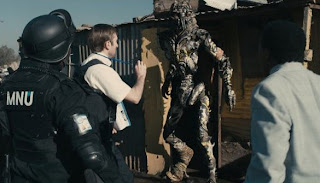I'VE GOT YOU...
Skin has a number of layers to it. In most areas of the body it is thick and tough. Here's a slide of the epidermis (top layer), dermis, and hypodermis (aka superficial fascia), which contains a lot of round fat cells. Collagen fibers from the dermis run down through the hypodermis to anchore the skin onto deeper structures of muscle or bone. The epidermis is purple in this picture because these cells have been stained with a special dye.

Pinch the skin on your forearm and roll it around between your fingers. Now pinch the skin on your forehead and do the same. Now, just for laughs, roll the forearm and forehead skin of a friend of the opposite sex between you fingers. Notice anything?
You probably noticed that there is more tissue thickness between your fingers when you lift the forearm skin. Believe it or not, the skin on your forearm is thinner than on your forehead. But the forearm skin and underlying connective tissue will seem bulkier because there's more fat there. You will also likely have more play in movement with the forearm skin, as opposed to the forehead skin, which is strapped on to your skull very tightly.
When you were pinching your skin, you also probably felt the tug pulling on the muscles and bones below. This demonstrates how hard it is to remove one's skin, on a whim.

Yes, this is a picture of back skin, but I couldn't find a picture of pincer palpation to the forehead. There are many types of massage techniques that address scarring and binding of the hypodermis.

Why pinch the skin of
an opposite sex person? Because according to the experts, men have 13% thicker forehead skin
than women(1).

You can't argue with a graph. It proves that Brad Pitt and Quentin Tarantino are more thick headed than Melanie Laurent.
Whether your skin is male or female, it's pretty tough. It takes a lot of abuse without breaking or tearing, thanks to those tough collagen fibers. It's also waterproof because of a protein called keratin. Let's take a moment to consider what life would be like if skin dissolved when you took a shower... it's worse than a water allergy(2)!

Angelena's dress, Brad's shoes... cow skin (probably not forehead).
It's tough when it's dead, and tougher when it's alive.
THICK SKINNED
Why the sudden lesson about the toughness of skin? Because the other night I went on a date with my cartoonist husband to see Quentin Tarantino's brilliant film, Inglourious Basterds. What do the Basterds do with their dead Nazi victims? Scalp them, of course. What do they do with the Nazis who survive their encounter with the Basterds? Carve a swastika on their forehead.
I have never scalped anybody, but I have dissected a cadaver. For some people, cutting the skin off the body is the worst part of the dissection. For me, getting through the connective tissue and fat of the hypodermis/superficial fascia was my biggest gross-out challenge. (Mostly because of the fatty smell and texture.) Cutting though those layers and manually breaking through that tissue(3) was a lot of work.
The special effect Geniouses got the tissue thickness pretty well during the scalping scenes. They could have used a little more blood and fibrous mess to add fullness. Even if the scalpee was dead, he wasn't dry, and hydration and blood add volume. But hey... exceptional job! I was appreciative in the moment.

Langer's lines
See these lines on the scalp? They're called Langer's lines. they indicate lines of least tension in the connective tissue of the scalp. "Elliptical excisions achieve greatest width of tissue removal when made parallel to (Langer's) lines of minimum tension(4)." Those oval-shaped scalp prosthetics in the film demonstrated the most efficient cut to get the most tissue.

Eli Roth as Sgt. Donny Donowitz and Brad Pitt as Lt. Aldo Raine, contemplate their handiwork.
Spoiler alert! At the end of the film a certain someone gets a swastika carved into his forehead. Again, the effects are effective! They got the skin thickness right and the bleeding was profuse, too. Bravo! But did you notice how loose the skin was? At a certain point a flap lifts up and is caught on the blade of the knife. If that were really forehead skin, there wouldn't be a flap. It would be anchored by the connective tissue beneath.

1. Sex- and site-dependent variations in the thickness and mechanical properties of human skin, by S. Diridollou, et. al. International Journal of Cosmetic Science, 22 421-435 (2000).
2. Yes, it's true! Some people have a water "allergy" and break out in hives when they're in the shower.
3. Yup! My instructor had been trained as a Rolfer and since many of us were massage therapists, he asked us to use our hands (gloved, of course!) to separate tissues as much as we could. Wild!
4. Scalp Surgery: Anatomic and Biomechanical Considerations, by Gerard E. Seery, MD. Dermatologic Surgery 27.9 (2001)


